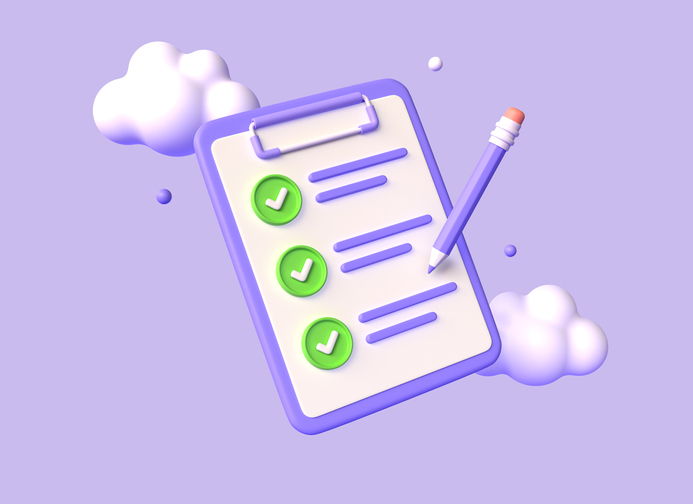Table of Contents

Share this entry

Clouds, while revolutionizing business, have exponentially increased complexity. From development to production, organizations are challenged to eliminate security gaps in both applications and the platforms. This task means they need a solution that can manage both identities and access privileges to data in the cloud. This brings us to our question — why is everyone talking about Cloud Infrastructure Entitlement Management (CIEM) and access?
Cloud resources are highly dynamic. Traditional Identity and Access Management (IAM) solutions and practices are designed to protect and control access to conventional static on-premises applications and infrastructure. These solutions aren’t typically well suited for safeguarding a highly dynamic cloud platform. Cloud security is its own beast: you can’t just lift and shift on-premises technologies and policies and expect that they will work — at least not well. Instead, there’s a new set of best practices that must be followed around access control, monitoring, attack surface management, and more.
Among the new cloud security, the best practice is Cloud Infrastructure Entitlement Management (CIEM). These solutions improve visibility, detect risk, and remediate misconfigurations to establish the least privilege access throughout single and multi-cloud environments.
Understanding the Value of CIEM
The rise of CIEM solutions has emerged because IAM challenges have become more complex. With the increased usage of multi-cloud and hybrid cloud infrastructures, there was a need for better tools. These tools handle identity governance for dynamic cloud environments, which typically follow the least privilege principle, where identities and entities can only access what they need for the minimum required time they need it.
CIEM manages, views, and configures cloud assets in new ways, while simultaneously viewing trust relationships, privileges, and more. This strong identity framework aids in addressing challenges related to governance, compliance, complexity, and beyond. By leveraging a CIEM tool, enterprise organizations can lock down and secure access to data at the scale and speed of the cloud.
Using the identity inventory and their effective permissions (entitlements) from a CIEM tool, organizations can now determine what data identities can access, how they can access the data, and what they can potentially do with the data. With this continuous visibility, teams can effectively determine where they have risks allowing them to better manage the risks and ensure that the cloud environment and the data within it stay secure.
Implementing Continuous Control Management
To maintain control and security across clouds, enterprises need to know what is going on at all times. With tens of thousands of identities active at any one moment, the task of monitoring them and finding misconfigurations is an absolute nightmare. Here lies the value of a CIEM solution to provide robust monitoring and alerting capabilities that empower enterprises to continuously track the activity patterns of all unique person and non-person identities across multiple cloud deployments.
Ideally, enterprises should have the ability to monitor their cloud environments from a multi-dimensional perspective. For example, monitoring activity through the “identity” lens enables the security and cloud infrastructure teams to track changes based on the identity’s activity profile. They can quickly ascertain which permissions an identity used, which permissions have not been used, and which resources they have accessed over time.
Most importantly, when something anomalous does happen, the tool should include the option to invoke an automated remediation response or notify the right team, either through email or third-party SIEM or SOAR tools, for immediate action. Because security teams are already overwhelmed by an avalanche of alerts, fixing security holes requires CIEM solutions to provide context that enables prioritization. It is simply not enough for a CIEM solution to alert teams to potential areas of risks or threats; the tool must deliver an easy, automated way to prioritize those alerts and assess the threat in context.
Accessing Under Control: CIEM Visibility
Implementing an infrastructure and entitlements management solution offers significant benefits to any company with a complex cloud infrastructure. As noted earlier, the best platforms provide visibility into the current activity on the cloud, even hybrid and multi-cloud environments.
Using an infrastructure and entitlements solution protects an enterprise’s cloud-based applications and critical data from hackers and other nefarious cybercriminals. Once again, automated features detect and alert when discovering potential threats, like dormant accounts or activities outside the norm. Even mistakes when creating new user accounts — like assigning excessive permissions — are detected by the system, preventing potentially harmful errors from impacting business operations.
Additionally, companies with significant regulatory compliance requirements benefit from a CIEM platform’s automated auditing features. This approach provides a documentation trail detailing the company’s tight controls on cloud access, especially those critical data privacy considerations. Companies in the banking, insurance and financial sectors significantly benefit from this functionality.
Managing cloud identities and their entitlements is a complex affair. With many identities, both people and non-people, traditional tools, like PAM, do not go broad and deep enough to provide you with the visibility you need to secure your cloud effectively. Throw in a multi-cloud environment, and you are especially unequipped. Once more, it begs for a CIEM solution.
Solving the Identity Inventory Problem
CIEM solutions should provide visibility into the entities currently accessing the organization’s cloud infrastructure: employees, clients, applications, cloud services, and more. This analysis must cover the specific resources being accessed, the type of access, and the time. Simply put, the information gathered must include the who, the what, and the when.
The ‘who, what and when’ analysis then informs the next implementation step, which deals with managing risk across the cloud infrastructure. The main task within this step involves the implementation of the least privilege principle noted earlier. In short, entities can only access applications and data they need to complete their work. No other access should be given.
Finally, cloud engineers need the means and visibility to monitor cloud activity on a 24/7 basis. This includes receiving actionable alerts whenever suspicious activity happens, such as unauthorized access.
Ultimately, partnering with a top CIEM provider lets companies work with the experts to devise an implementation strategy compatible with the organization’s cloud security approach. As CIEM is a relatively new sector in cloud technology, best practices for implementing a platform are still being developed, making that expert input all the more valuable.
Finding a CIEM Solution
Make no mistake, CIEM represents the future of cloud security. While no vendor currently offers a comprehensive solution and vendor road maps are likely to change as the space evolves and matures, businesses seeking to gain a strategic head start are already investing in CIEM — and gaining benefits by taking an ‘identity is the new perimeter’ approach. Join in on the benefits of levering CIEM today.






